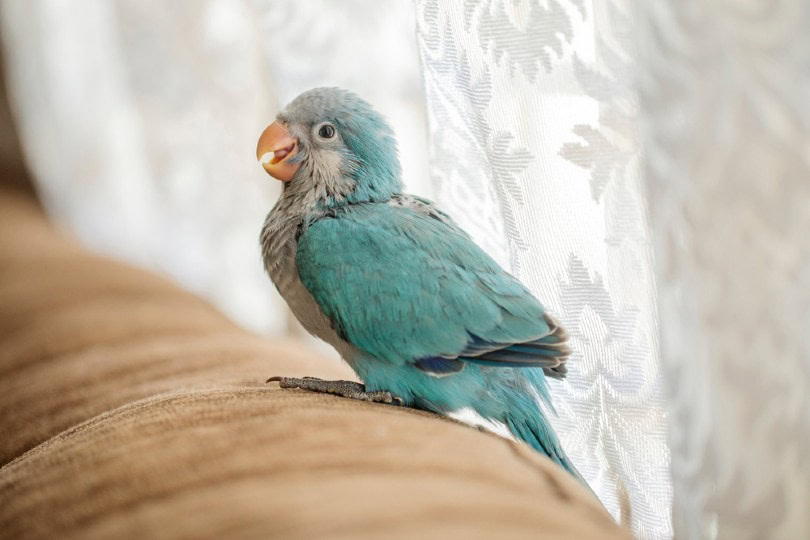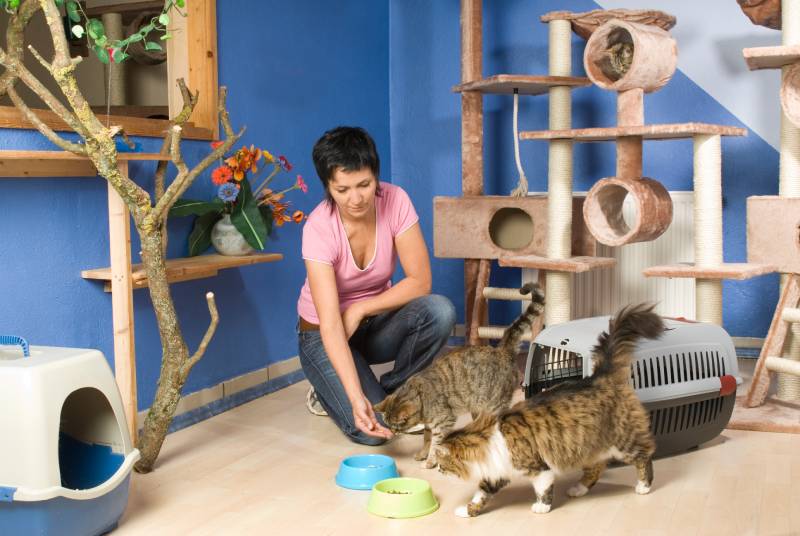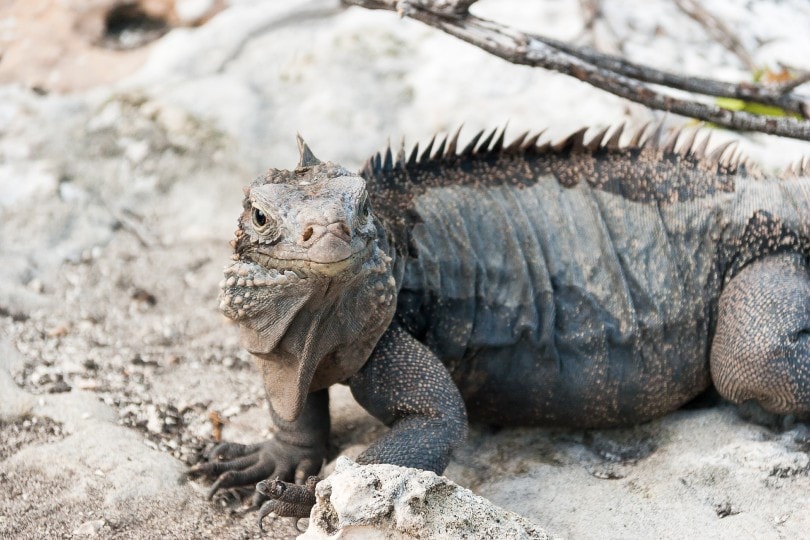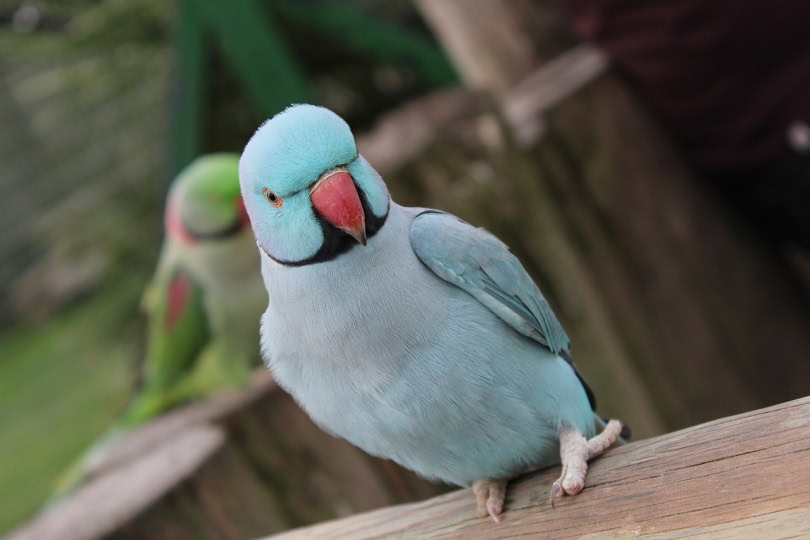Click to Skip Ahead
The blue Quaker parrot is a selectively bred bird created for its attractive color. It’s essentially the same as other Quaker parrots, but its bright blue color makes it a favorite among owners and breeders. If you are thinking about purchasing one of these birds for your home but would like to know more about it, keep reading while we discuss the color, history, and concerns associated with owning a blue Quaker parrot to help you see if it’s right for your home.

Species Overview
| Common Names: | Blue Quaker parrot, blue Quaker parakeet, blue monk parrot, grey Bbeasted parakeet, Montevideo parakeet |
| Scientific Name: | Myiopsitta monachus |
| Adult Size: | 11 – 13 inches |
| Life Expectancy: | 20 – 30 years |
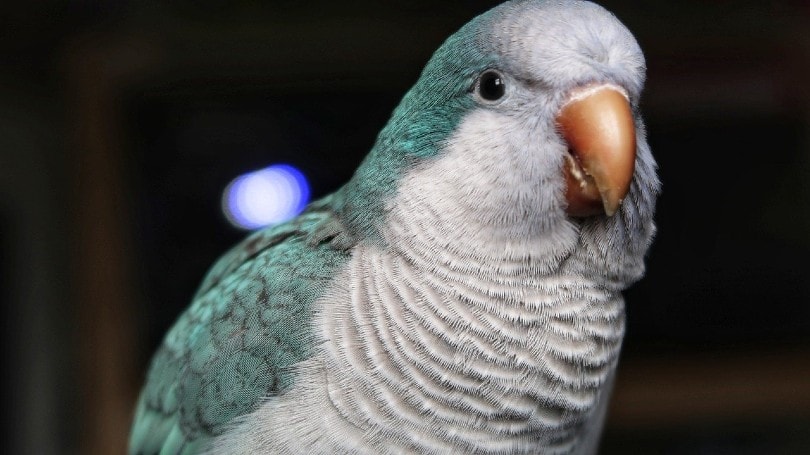
Origin and History
You can find the blue Quaker parrot in its natural habitat if you visit Brazil, Uruguay, and Argentina. However, you can also find it in many other parts of the world, where many consider it an invasive species. These birds can quickly adapt to almost any habitat, and they can even withstand colder temperatures than many other parrots.
In the United States, the Quaker parrot was popular between the 1960s and 1980s, and many pet birds found their way into the wild, where they formed feral colonies.
Scientists have discovered colonies as far north as New Jersey and Connecticut. With several other states reporting colonies, it’s no surprise that many states have made it illegal to own a Quaker Parrot, so you will need to check with our local authorities before purchasing one.
Blue Quaker Parrot Colors and Markings
Traditional Quaker parrots usually have green feathers covering most of their body, while the breast, cheeks, and throat will have grey feathers. The pattern somewhat resembles colonial clothing, which might be where the bird gets its name. Others believe the name comes from their habit of rapidly shaking (quaking) when they are relaxed.
There are several variations to the standard Quaker parrot, including a yellow-headed mutation, yellow body mutation, and the blue mutation we are talking about here. While these mutations can occur in nature, they are much more common with breeders who know how to isolate the genes required to create them, and some breeders will allow you to select between several variations.
Blue Quaker parrots are slightly smaller than standard birds, and the grey on the breast, cheeks, and throat will instead be a blue-grey closer to the rest of the body.
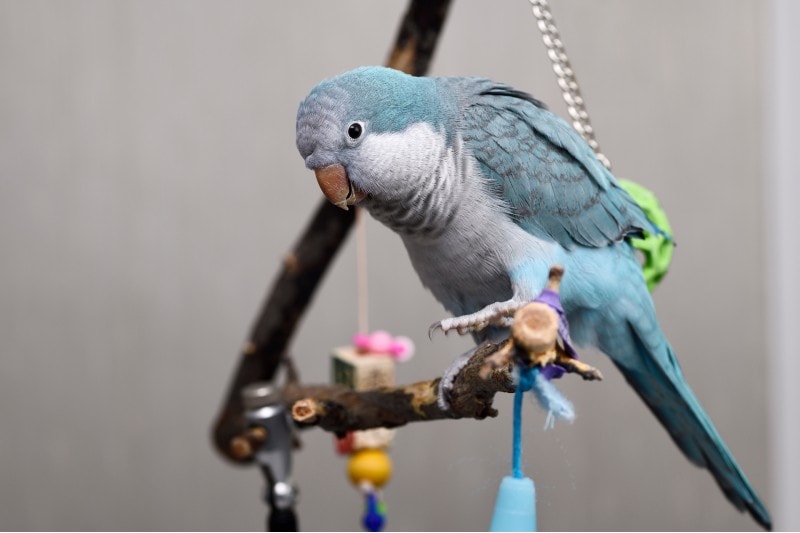
Where to Adopt or Buy a Blue Quaker Parrot
Before you purchase a Quaker parrot, we highly recommend looking up the local laws in your area. Many states have made it illegal to own these birds, including California, Colorado, Pennsylvania, Tennessee, etc. If you are in a place where they are illegal, you won’t be able to find them at your local pet store, and breeders won’t ship them to you.
If you are in one of the states where it is legal to own these birds, we recommend starting with your local animal shelters. Many owners place birds in animal shelters because they are too noisy for the neighbors or their living arrangements have changed, and they can no longer take care of the bird. If you find a blue Quaker parrot at the local shelter, you will usually get it at a significant discount, and it will likely already have the shots it needs. If there are none in the shelter, you can generally find one in a local pet store or even order one online. Blur Quaker parrots typically cost between $500 and $1,500 each.


Final Thoughts
The blue Quaker parrot is an attractive variation on the popular Quaker parrot that maintains its friendliness and love of being around people. It’s a healthy bird that can often live more than 20 years with very few health problems and will even learn a few words to keep you entertained. However, due to their hardiness, there are laws prevention people in many states from owning them. Ferrel colonies can displace natural wildlife and harm crops, so you will need to see if you can own one in your area.
We hope you have enjoyed this short guide and have found the answers to your questions. If we have convinced you to get one of these amazing birds for your home, please share this guide to the blue Quaker parrot on Facebook and X (formerly Twitter).
Featured Image Credit: V.S.Anandhakrishna, Shutterstock
